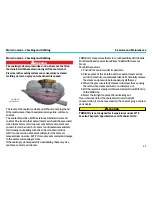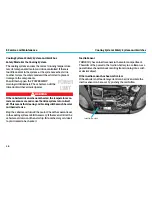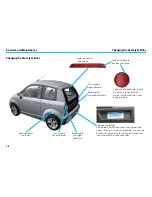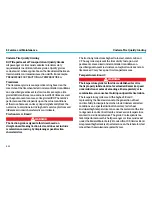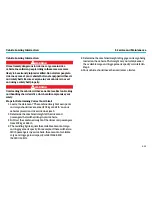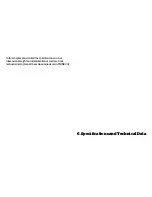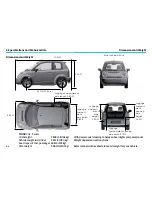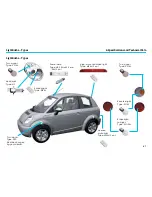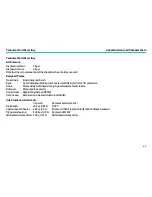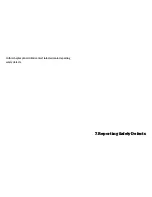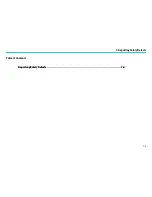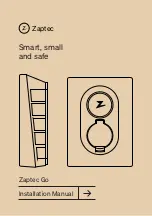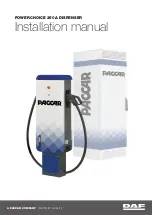
5. Service and Maintenance
5-22
Uniform Tire Quality Grading
DOT (Department of Transportation) Quality Grades
All passenger car tires must conform to federal safety
requirements in addition to these grades. Quality grades
can be found, where applicable, on the tire sidewall between
tread shoulder and maximum section width. For example:
TREADWEAR 200 TRACTION AA TEMPERATURE A
Treadwear
The treadwear grade is a comparative rating based on the
wear rate of the tire when tested under controlled conditions
on a specified government test course. For example, a tire
graded 150 would wear one-and-one-half (1-1/2) times as well
on the government course as a tire graded 100. The relative
performance of tires depends upon the actual conditions
of their use, however, and may depart significantly from the
norm due to variations in driving habits, service practices and
differences in road characteristics and climate.
Traction AA, A, B and C
! WARNING
The traction grade assigned to this tire is based on
straight-ahead braking traction tests, and does not include
acceleration, cornering, hydroplaning or peak traction
characteristics.
Uniform Tire Quality Grading
The traction grades, from highest to lowest, are AA, A, B and
C. Those grades represent the tire’s ability to stop on wet
pavement as measured under controlled conditions on
specified government test surfaces of asphalt and concrete. A
tire marked C may have poor traction performance.
Temperature A, B and C
! WARNING
The temperature grade for this tire is established for a tire
that is properly inflated and not overloaded. Excessive speed,
under-inflation or excessive loading, either separately or in
combination, can cause heat buildup and possible tire failure.
The temperature grades are A (the highest), B and C,
representing the tire’s resistance to the generation of heat
and its ability to dissipate heat when tested under controlled
conditions on a specified indoor laboratory test wheel.
Sustained high temperature can cause the material of the tire
to degenerate and reduce tire life, and excessive temperature
can lead to sudden tire failure. The grade C corresponds to a
level of performance which all passenger car tires must meet
under the Federal Motor Safety Standard No. 109. Grades B and
A represent higher levels of performance on the laboratory test
wheel than the minimum required by law.
Summary of Contents for think city
Page 1: ...THINK City USER MANUAL...
Page 2: ......
Page 8: ...1 Get to Know Your THINK City 1 2...
Page 26: ...2 Overview of Instruments and Controls 2 2...
Page 38: ......
Page 40: ...3 Climate Controls 3 2...
Page 48: ......
Page 50: ...4 Driving and Safety 4 2...
Page 80: ......
Page 82: ...5 Service and Maintenance 5 2...
Page 104: ......
Page 106: ...6 Specifications and Technical Data 6 2...
Page 114: ......
Page 116: ...7 Reporting Safety Defects 7 2...
Page 117: ...7 Reporting Safety Defects 7 3 Table of Contents ReportingSafetyDefects 7 4...
Page 119: ...8 Index...
Page 123: ......


